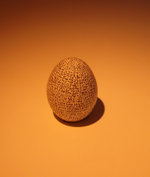Tehom: Difference between revisions
→Gnosticism: Copied content from Sea of Suf; see that page's history for attribution |
Remove unnecessary [citation needed] |
||
| Line 1: | Line 1: | ||
{{Short description|Primordial waters of creation in the Bible}} |
{{Short description|Primordial waters of creation in the Bible}} |
||
'''Tehom''' ({{lang-he|תְּהוֹם}}), literally the Deep or [[Abyss (religion)|Abyss]] ({{lang-grc|ἄβυσσος}}), refers to the '''Great Deep''' of the [[primordial waters]] of creation in the [[Bible]]. |
'''Tehom''' ({{lang-he|תְּהוֹם}}), literally the Deep or [[Abyss (religion)|Abyss]] ({{lang-grc|ἄβυσσος}}), refers to the '''Great Deep''' of the [[primordial waters]] of creation in the [[Bible]]. |
||
[[File:Early Hebrew Conception of the Universe.svg|thumb|300px|Early |
[[File:Early Hebrew Conception of the Universe.svg|thumb|300px|Early Hebrew conception of the cosmos. The [[firmament]], [[Sheol]] and tehom are depicted.]] |
||
==Origins== |
==Origins== |
||
Revision as of 03:51, 29 December 2021
Tehom (Hebrew: תְּהוֹם), literally the Deep or Abyss (Ancient Greek: ἄβυσσος), refers to the Great Deep of the primordial waters of creation in the Bible.

Origins
Tehom is a cognate of the Akkadian word tamtu and Ugaritic t-h-m which have similar meaning. As such it was equated with the earlier Sumerian Tiamat. In Modern Arabic, Tihamah refers to a coastal plain of the Red Sea.
Robert R. Stieglitz stated that Eblaitic texts demonstrate the equation of the goddess Berouth in the mythology of Sanchuniathon with Ugaritic thmt and Akkadian Tiâmat, via the name bʾrôt ("fountains").[1]
Assyriologist Heinrich Zimmern writes in his comparative study of Babylonian and Hebrew creation myths:
According to both traditions before the creation all was water. The deep is personified as a terrible monster, which in the Babylonian version bears the name of "Tihamat," corresponding to the Hebrew "Tehom," used as the technical expression for the primæval ocean. The Hebrew word is employed without the article, like a proper name, thus indicating that in Israelite tradition also it stood originally for some mythological being.[2]
However, the word is also used in the plural (tehomot), suggesting that in the Bible it refers to a geographical feature which could occur in multiple places, rather than a single being.[3][non-primary source needed]
Genesis
Tehom is mentioned in Genesis 1:2, where it is translated as "deep":
And the earth was without form, and void; and darkness was upon the face of the deep. And the Spirit of God moved upon the face of the waters.
The same word is used for the origin of Noah's flood in Genesis 7:11:
In the six hundredth year of Noah's life, in the second month, the seventeenth day of the month, the same day were all the fountains of the great deep broken up, and the windows of heaven were opened.
Gnosticism
Gnostics used this text[which?] to propose that the original creator god, called the "Pléroma" or "Bythós" (from the Greek, meaning "Deep") pre-existed Elohim, and gave rise to such later divinities and spirits by way of emanations, progressively more distant and removed from the original form.
In Mandaean cosmology, the Sea of Suf (or Sea of Sup) is a primordial sea in the World of Darkness.[4][5][6]
Kaballah
Tehom is also mentioned as the first of seven "Infernal Habitations" that correspond to the ten Qliphoth (literally "peels") of Jewish Kabbalistic tradition, often in place of Sheol.
See also
References
- ^ Stieglitz, Robert R. (1990). "Ebla and the Gods of Canaan". In Cyrus Herzl Gordon; Gary Rendsburg (eds.). Eblaitica: essays on the Ebla archives and Eblaite language. Eisenbrauns. pp. 79–90 (p.88). ISBN 978-0-931464-49-2.
- ^ Heinrich Zimmern, The Ancient East, No. III: The Babylonian and Hebrew Genesis; translated by J. Hutchison; London: David Nutt, 57–59 Long Acre, 1901.
- ^ Exodus 15:8, Deuteronomy 8:7, Isaiah 63:13, Psalms 33:7, etc.
- ^ Aldihisi, Sabah (2008). The story of creation in the Mandaean holy book in the Ginza Rba (PhD). University College London.
- ^ Ginza Rabba: The Great Treasure. An equivalent translation of the Mandaean Holy Book. Translated by Al-Saadi, Qais Mughashghash; Al-Saadi, Hamed Mughashghash. Drabsha. 2012.
- ^ Ginza Rba. Translated by Gelbert, Carlos. Sydney: Living Water Books. 2011. ISBN 9780958034630.



